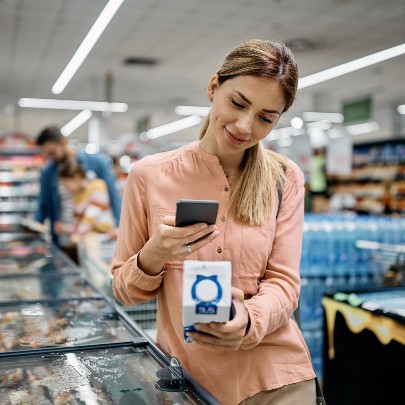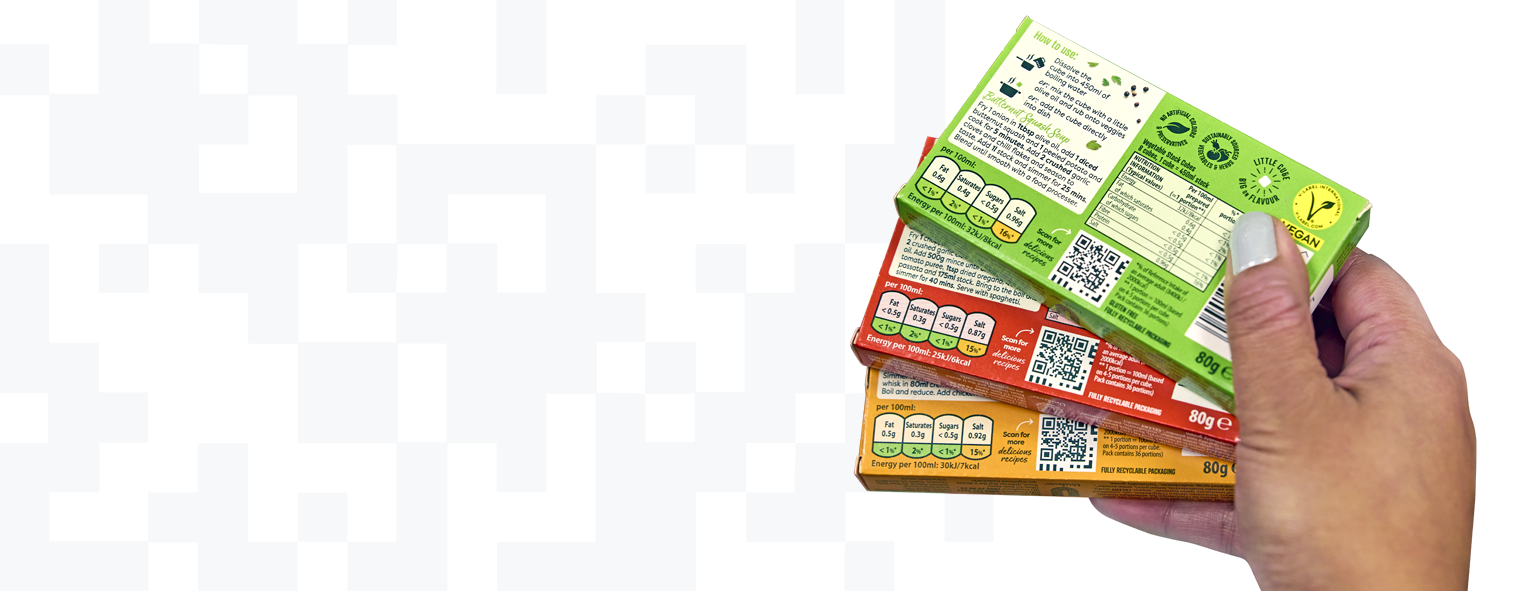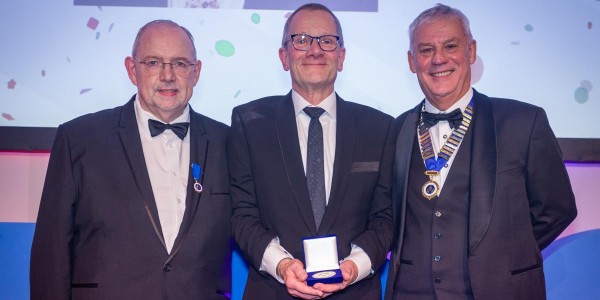February 20, 2025 Industry news
The foundations of customer relationships are shifting in the UK. The informed, knowledge-hungry customer will be the norm in the near future and, by 2030, the feature most in demand from customers will be access to detailed product information. A company’s ability to meet this need will rely on trustworthy data obtained from across the supply chain and shared with customers using technologies such as QR codes powered by GS1.
Many businesses are now using QR codes powered by GS1 to strengthen trust, transparency and loyalty with their consumers. GS1 UK CMO, Sarah Atkins recently spoke to four such businesses to find out how and why they are harnessing QR technology to challenge the status quo.
As these pioneering founders shared their experiences, a common theme emerged—brands that invest in transparency, engage directly with their customers, and harness the power of data will be the ones that thrive.
Read on for a summary of the key insights they shared.
The trust deficit
Product information is now one of the least trusted sources of data, ranking below politicians, social media influencers, estate agents, and bank managers. Consumers are becoming more cynical. They want to know what’s really in their food, where their products come from, and whether they can trust the brands they buy from. For challenger brands looking to disrupt established categories, building credibility is a critical factor for achieving long-term success.
As highlighted by the following examples, combining compelling brand stories with technology can be highly effective for bridging this trust gap and creating meaningful connections with their customers.
Whey Better Chocolate: making science accessible
Mark Millard, founder of Whey Better Chocolate, shared how his journey from being an overweight child to a sports scientist inspired him to create a high-protein, low-sugar chocolate alternative. However, launching in the confectionery space presented an immediate challenge—convincing consumers that a healthier chocolate bar could still taste great.
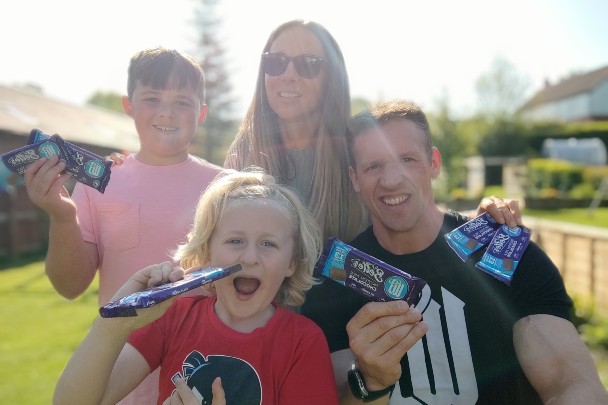
Mark and his family
“The problem is, most people don’t like traditional protein bars,” he said. “They want something that tastes like real chocolate, but without the guilt. That’s where we come in.”
But how do you prove that a nutritional product actually delivers on its promises? For Mark, the answer lies in transparency and education.
"We use QR codes on our packaging to give customers direct access to the science behind our product," he explained.
"They can scan the code and immediately see the nutritional information, the benefits, and even real customer reviews. That transparency is key to building trust."
Creative Nature: the fight for allergy-safe food
For Julianne Ponan, trust is more than just a marketing tool—it’s a matter of life and death. As someone who suffers from severe allergies, she founded Creative Nature to provide 100 per cent allergen-free snacks that consumers could trust.

Julianne Ponan MBE, founder & CEO, Creative Nature
"I’ve been in anaphylactic shock more than 14 times," she revealed. "I know what it’s like to pick up a product that says ‘may contain nuts’ and have no idea if it’s safe."
Julianne has built a deeply engaged community of allergy sufferers by using QR codes powered by GS1 to provide immediate, verifiable information.
When a consumer scans a Creative Nature product, they can instantly confirm that it is free from allergens, eliminating any doubt or fear.
"It’s like buying a food product that says ‘may contain glass’—you just wouldn’t take the risk," she said. "With QR codes, we can prove that what’s on our label is 100% accurate."
Shadia Al Hili – Cuzena: bringing Middle Eastern cuisine to the mainstream
Shadia Al Hili founded Cuzena to introduce authentic Middle Eastern flavours to a wider audience. However, as a challenger brand, she faced the challenge of convincing consumers to try something unfamiliar.
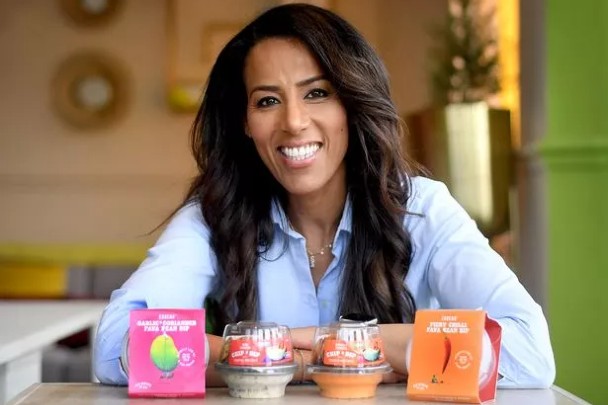
Shadia Al Hili, founder of Cuzena
“People look at a £3.50 Middle Eastern sauce next to a £2 Heinz product and think—why should I pay more?” she explained. Her solution has been to use storytelling as a differentiator.
By integrating QR codes powered by GS1 into her packaging, she has created a way to bring the heritage behind her products to life.
“When customers scan our QR codes, they’re instantly connected to the history of our recipes, the quality of our ingredients, and our brand story,” she said.
“That’s how we compete with the big brands—by being real.”
Hill Farm Oils: reinventing a brand
As the first British farm to produce cold-pressed rapeseed oil, Hill Farm Oils has a strong heritage. However, evolving consumer habits have made it harder to connect directly with shoppers.

Martin Westhorp, managing director at Hillfarm Oils
“We needed a way to reconnect with our customers," Westhorp explained. "Our story is strong, but how do we tell it in a way that fits today’s digital world?”
For Hill Farm Oils, QR codes powered by GS1 have been transformational, allowing them to capture valuable customer insights for the first time.
"Before, we relied on retailer data, which only told us so much," he said.
"Now, when customers scan our packaging, we can see exactly who they are, where they are, and how often they return. That information is invaluable."
This direct-to-consumer approach is allowing Hill Farm to refine its marketing strategy, strengthen customer retention and personalise their communications.
A new era of transparency
QR codes are no longer just static links—they are becoming essential marketing tools that enable brands to track customer behaviour, personalise interactions, and drive sales.
"We’re seeing brands use QR codes to gain real-time insights, offer exclusive content, and enhance the customer experience," Sarah Atkins said. "That’s a huge opportunity for challenger brands looking to differentiate themselves."
Trust is increasingly becoming the most valuable currency for brands. As modern consumers seek brands that are open, honest and transparent, businesses that embrace QR codes powered by GS1 will not only strengthen customer relationships, they could also gain the insights they need to thrive in an increasingly digital world.
The future of retail is about turning transparency into trust—and trust into loyalty and, for brands willing to adapt, the opportunities are vast.
